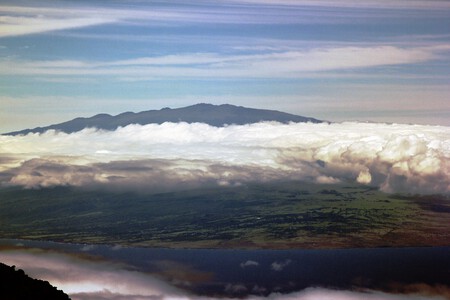Based on seeing it repeated over and over again in school books, lists of geographical curiosities and encyclopedias, we take it for granted, as part of that collection of general culture that anyone with a couple of readings is supposed to: the Everest is the highest mountain on the planet. It turns out that the thing, however, is not as simple as they explained to us in Knowledge of the Environment. In the end, as in almost everything, it depends on the perspective with which you look at it.
the top of the Himalayas It is effectively the highest above sea level, which is the scale that experts usually use to measure heights; but… What happens if we do without it and look, simply and plainly, at the global size of the mountains? Is Everest still the biggest giant in the world in that case? No. And clearly, too. If the criteria is changed, there are more advantaged opponents, such as mauna keaa dormant volcano located in Hawaii.
Mauna Kea, “White Mountain”, has a height of 4,205 meters. That, of course, if sea level is taken as a reference. With that mark, it is very far from the 8,848 meters that Everest reaches. The key is under the ocean, where the largest extension of Mauna Kea is hidden, around 6,000 m. If the measurement were made from its base to the peak, the result —according to data handled by the US Geological Survey (USGS)— is that the height would be around 10,211 ma measure “considerably higher than the highest mountain on Earth, Mount Everest”.
The key, underwater
What is the reason for the colossal size of Mauna Kea? And that it hides such an extension under the waters of the Pacific? As detailed by geologist David Tobar in an article of Time, the key is its volcanic origin. Upon coming into contact with the water, the magma cools, solidifies and generates the rock that serves as the base of the giant. In the case of Mauna Kea, a “shield volcano”, the base is extensive and its slopes have a very low inclination, which makes it easy for it to reach great heights.
His neighbor is very close mauna loa, the largest active volcano on the planet and that only since 1843 has erupted more than thirty times. Its summit rises 4,169 meters above sea level, somewhat less than Mauna Kea, but with a similar submerged secret. The USGS experts themselves highlight the enormous surface that is hidden under the waters of the Pacific Ocean, especially if one takes into account the depression of the seabed itself due to the mass of the volcano. Not long ago Mauna Loa made headlines when it erupted for the first time in almost four decades.
Mauna Kea’s features have not gone unnoticed by professional astronomers. Today it has more than a dozen telescopes. An international project has even been put on the table with a budget of 1.4 billion dollars to add to that list a new observatory with a 30-meter device, a proposal that met with the rejection of those who are committed to preserving the space. Among them is the actor Jason Momoa.

Everest would also fall short again if we change the criteria again and, instead of taking into account the height with respect to sea level or from the very base of the mountain, another scale is taken as a reference: the distance with respect to the Center of the Earth.
In that case —remember live science— I would highlight Chimborazo, in the Andes, on its own merits. Its height from sea level is 6,263m, well below the 8,848 of Everest; but things change when the distance from the center of the planet is valued. We are talking then of 6,384.4 kilometers, more than the 6,382.6 of the great mountain of the Himalayas. The measure confirmed it in 2016 an expedition of the Military Geographic Institute of Ecuador and the French Institute of Research for Development (IRD) thanks to measurements made with the help of a GPS system.
The secret of the Chimborazo is not under the stormy waters of the ocean, as it happens with Mauna Kea and Mauna Loa, in Hawaii, but in the place it occupies on the planet. The peculiar shape of the Earth, an oblate spheroid that protrudes along the equator, and the difference between the polar and equatorial radius places the Andean summit in an advantageous place to win the rest of the opponents in the race to become the great “giant” of the terrestrial surface.
If we skip the League and go to the Solar System, where we can find titans like Mount Olympus, on Mars, with a height of around 27,000 metersthe scales are blurred.
Images: Peter Luo (Unsplash) and Kahunapule Michael Johnson (Flickr)







![[Img #74692]](https://thelatestnews.world/wp-content/uploads/2024/12/What-do-11-and-12-year-old-boys-and-girls-300x200.jpg)
